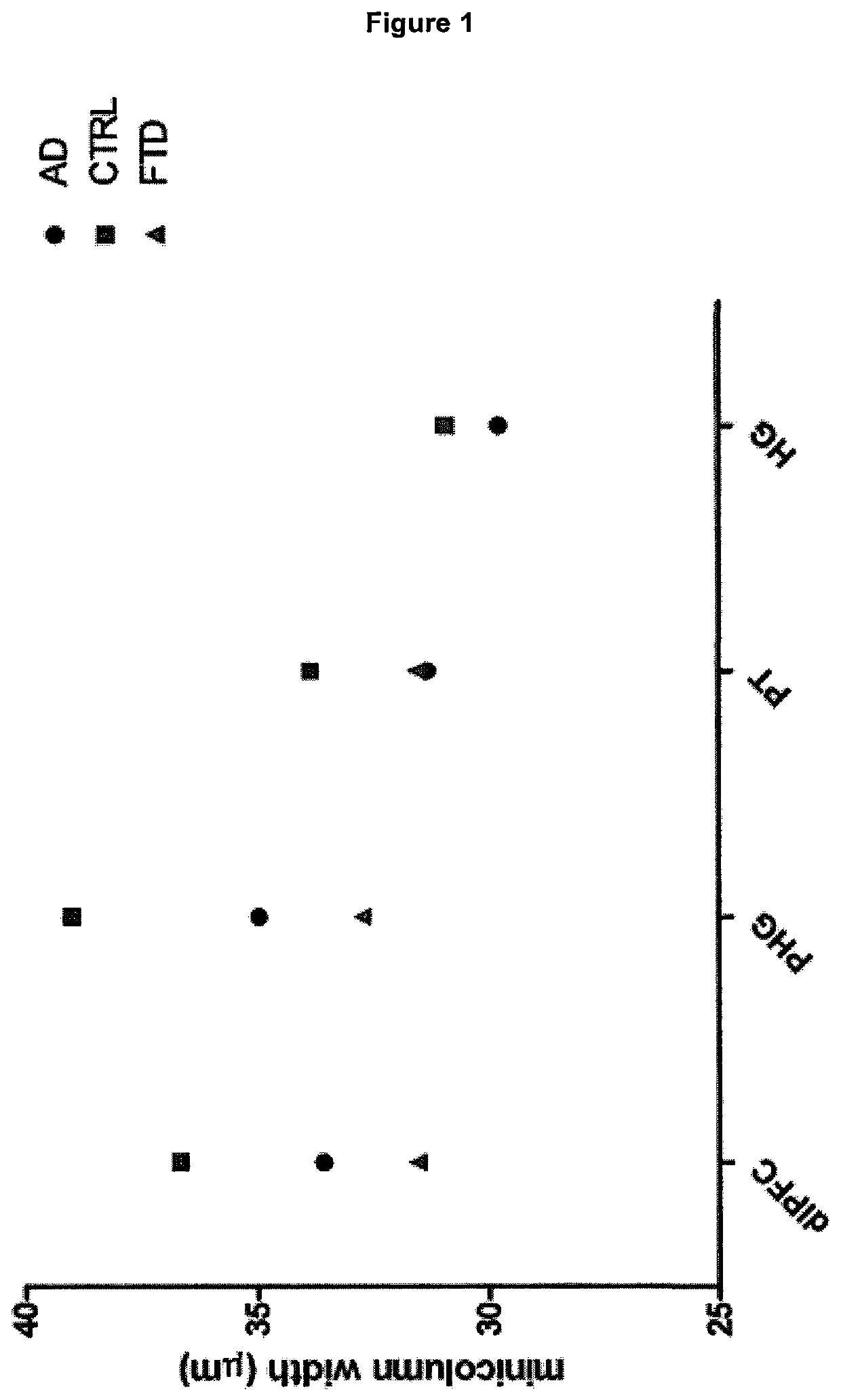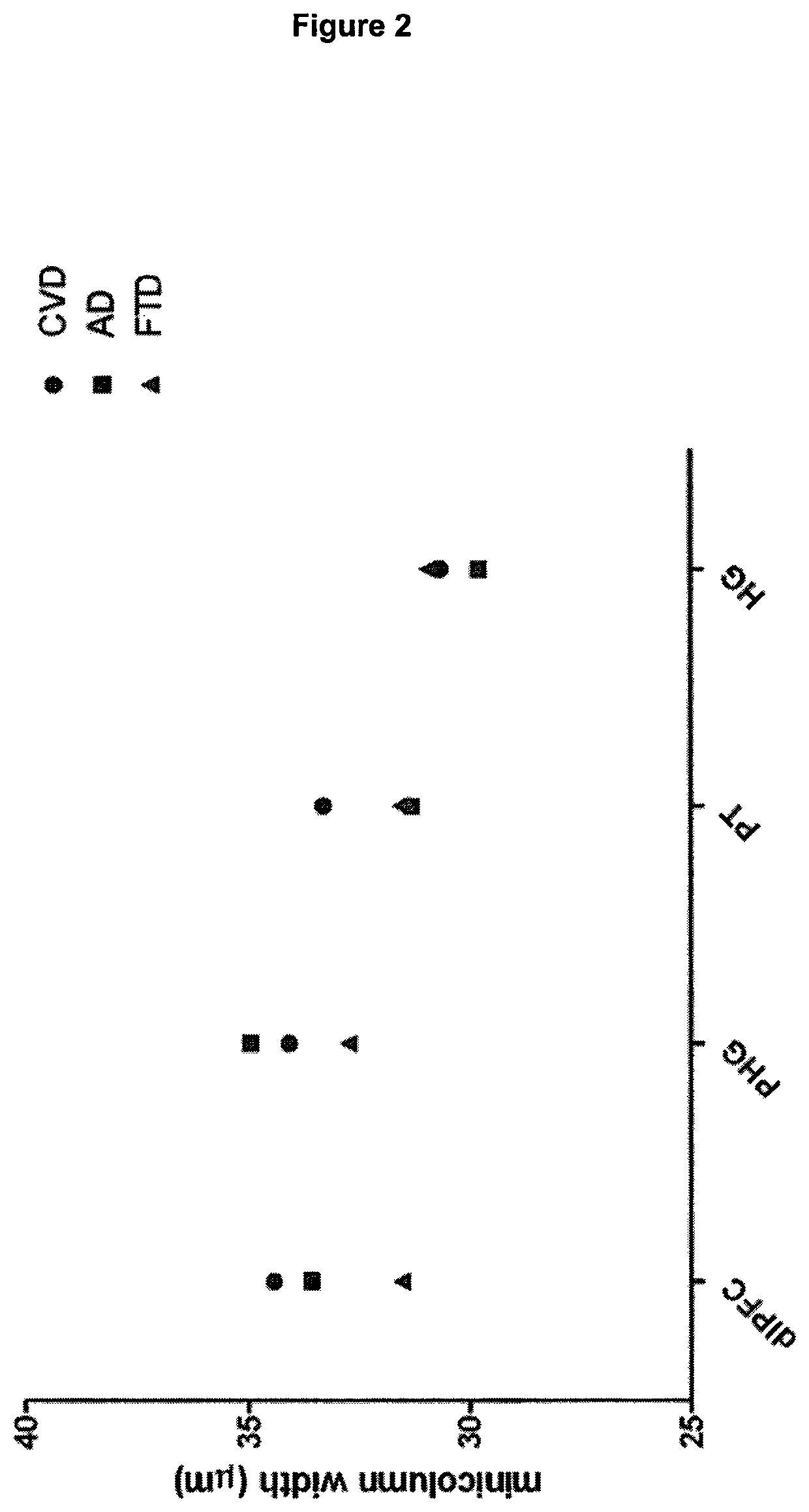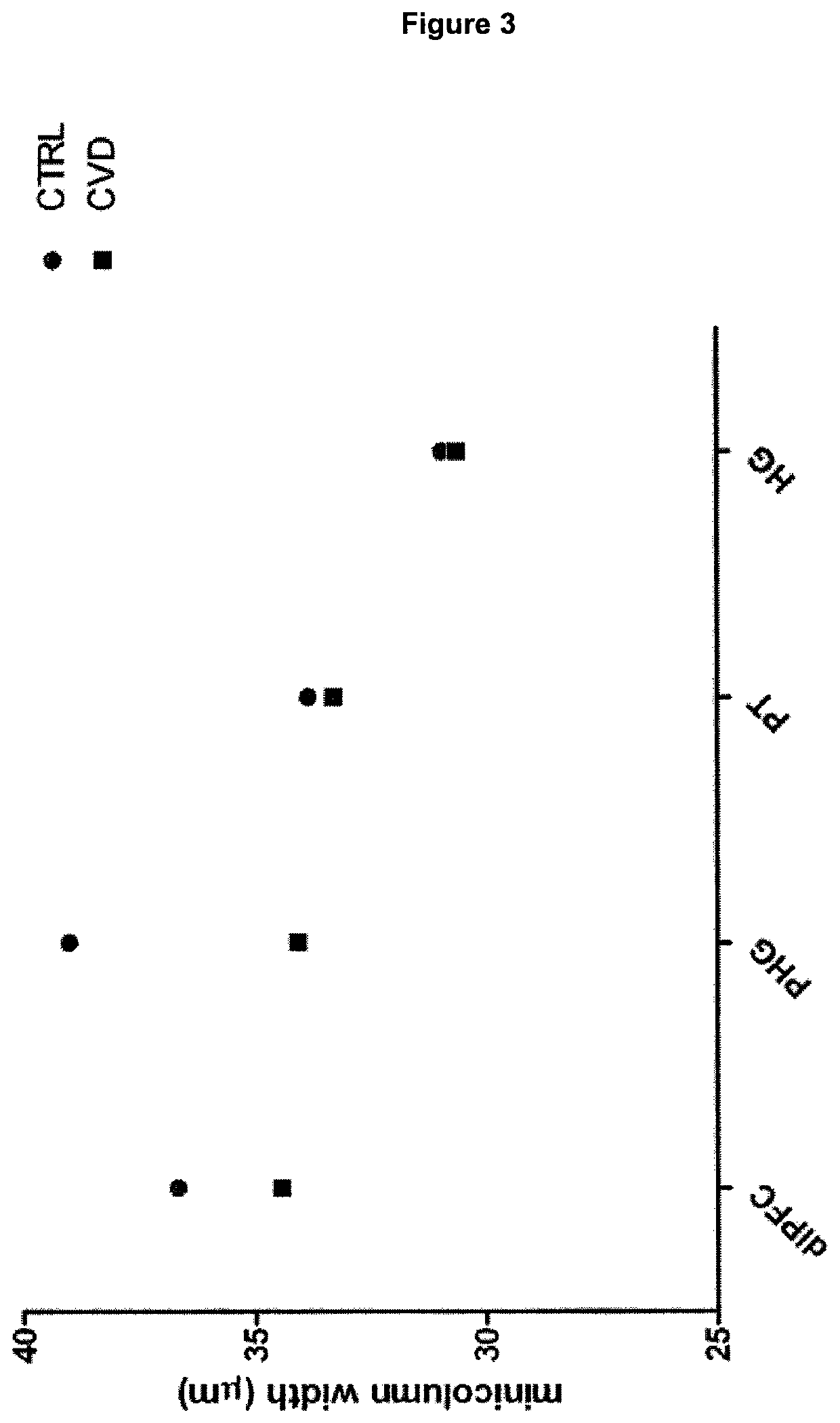Medical imaging
- Summary
- Abstract
- Description
- Claims
- Application Information
AI Technical Summary
Benefits of technology
Problems solved by technology
Method used
Image
Examples
example 1
ctural Analysis of Post-Mortem Brain Tissue Methods
[0174]
TABLE 1Demographic summary human subjects(means and standard deviations)Age atPost-mortemDiagnosisMMSENARTdeathFixationintervalgroupscorescore(years)(months)(hours)CTRL, N = 202811881——CVD, N = 182511681——AD, N = 201510074——FTD, N = 12169771——
Subjects:
[0175]Formalin-fixed brain tissue was sampled from 58 adults (20 normal controls, 18 MCI subjects, and 20 confirmed AD patients) who had died between the ages of 59 and 101 years. (An additional set of younger control subjects was also studied, as described in the next paragraph.) The healthy controls were free from neurological or psychiatric diseases. The brains were part of the Thomas Willis Oxford Brain Collection, drawn from the OPTIMA cohort—a prospective longitudinal clinicopathological study of aging and cognitive decline. Subjects underwent cognitive testing at several time points in life. The results from the MMSE and national adult reading test (NART) were used in the ...
example 2
e Modelling
[0211]The same data used as in Example 1 but a different form of statistical analysis was applied, i.e. leave-one-out cross-validation which predicts the status of one case on the basis of the model derived from all other cases and then repeats this process for all cases, resulting in a final analysis of the predictive value of the discriminant function model derived from the whole dataset for all cases in the dataset. It is a standard form of analysis, conducted using SPSS statistical software in this case.
[0212]Discriminant function analysis was used to generate predictive models to categorise cases into diagnostic groups. This is of interest to determine the differential diagnosis potential of multi-region minicolumn data that may provide sensitivity and specificity estimates as a target for neuro-imaging methods in living subjects. Discriminant function analysis was conducted with SPSS to investigate early diagnosis potential (controls, mild cognitive impairment (MCI)...
example 3
In Vivo MRI Scanning—Using Mean Diffusivity
[0224]This data was extracted from previously gathered MRI data in another study which was not optimal for this analysis (lower resolution data acquisition) but was intended to give a sense of potential for gathering in vivo data. This provided mean diffusivity data (which is likely to be a less sensitive indicator of minicolumn organisation than the measures mentioned above) from in vivo MRI of subjects in two diagnostic categories: MCI and healthy aged controls.
[0225]A discriminant analysis was conducted on data gathered from a small set of brain regions involving PHG, HG, and Fusi. The statistical model found that 71% of the original cases were correctly classified with a leave-one-out cross validation accuracy of 58%. Although these models are not as effective as the post-mortem MCI categorisation it is highly likely that they would improve if further work was done to acquire higher resolution in vivo data using the a more promising sig...
PUM
 Login to view more
Login to view more Abstract
Description
Claims
Application Information
 Login to view more
Login to view more - R&D Engineer
- R&D Manager
- IP Professional
- Industry Leading Data Capabilities
- Powerful AI technology
- Patent DNA Extraction
Browse by: Latest US Patents, China's latest patents, Technical Efficacy Thesaurus, Application Domain, Technology Topic.
© 2024 PatSnap. All rights reserved.Legal|Privacy policy|Modern Slavery Act Transparency Statement|Sitemap



